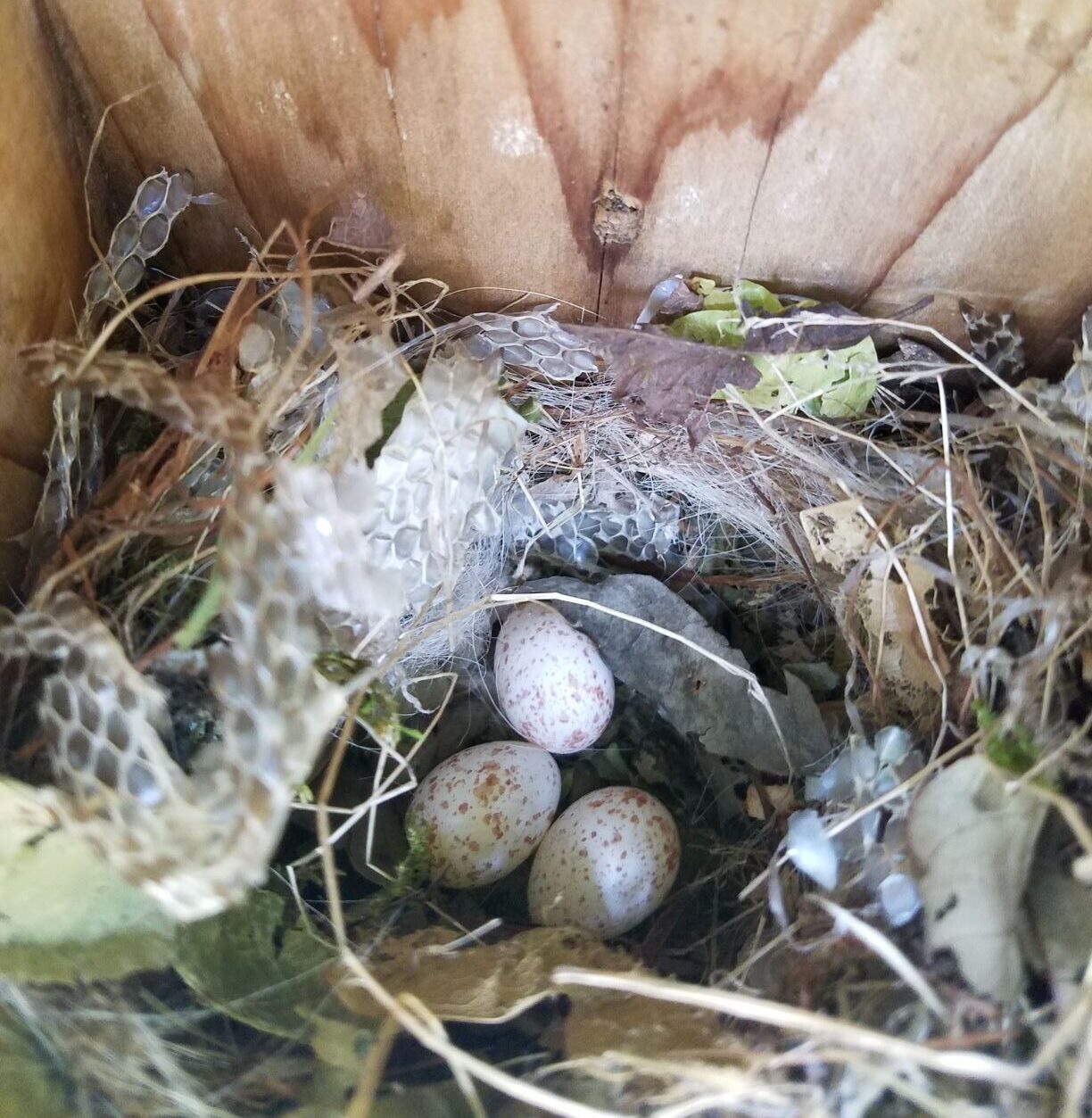Do Birds Use Scarecrows? On the Evolution of Snake Skin as Nest Material
October 7, 2024by Vanya Rohwer, Curator of Birds and Mammals at the Cornell University Museum of Vertebrates
The materials birds use in nest construction can have a strong effect on conditions experienced by eggs, nestlings, and incubating parents. For example, species breeding in cold environments often use insulative materials in their nests. But, the function of many nesting materials remains poorly known. Here, we explore one material frequently reported in bird nests: shed snake skin. Snake skins are relatively rare among materials available for nesting birds, so species that use this material invest time and energy locating and gathering it, suggesting that it increases reproductive success.

Abandon All Hope, Ye Who Enter Here
Researchers found that among species reported to use snake skin as nest material, cavity-nesting species were 6.5-times more likely to use shed snake skin than open-cup nesters.
The early literature on snake skins in bird nests reflects how intriguing this behavior is. This quote from Hume’s (1889) The Nests and Eggs of Indian Birds, captures it nicely: “Are birds superstitious, I wonder?” [Snake skins] are at best harsh, unmanageable things, neither so warm as feathers…nor so soft as cotton or old rags…Can it be that snakes have a repugnance for their ‘worn out weeds’ that they dislike these mementoes of their fall, and that birds which breed in holes into which snakes are likely to come by instinct select these exuviae as scare-snakes?”
So, why do birds incorporate snake sheds into their nest? Our study tackled this question using three independent approaches. First, we looked for patterns across species reported to use snake skin in nest construction. So far, 78 species are reported to use shed snake skin in their nests and these species disproportionately nest in secondary cavities compared to open-cup nesting species. Second, we took a more nuanced look at a subset of species reported to use shed snake skin in nest construction to see if cavity nesting species used snake skin more reliably than open cup nesting species. Data from digitized nest record cards at the Western Foundation of Vertebrate Zoology show that, among species reported to use snake skin in nest construction, cavity nesting species were 6.5-times more likely to use shed snake skin compared to open cup nesters. Together, these data suggests that the benefits of using shed snake skin may be higher for cavity compared to open-cup nesting species.

A Frightful Nest
A Tufted Titmouse placed these pieces of snake skin very conspicuously in the nest. Incubating females sometimes also lunge and hiss like a snake to further convince intruders to leave.
What are the benefits?
Our third approach explored this question by testing four possible ideas. Perhaps shed snake skin changes the microbial communities or nest ectoparasite loads in nest? Maybe snake skin acts as a signal of individual quality? Or maybe it reduces nest predation? Of these ideas, we found support for the nest predation hypothesis: shed snake skin reduced nest predation in cavity, but not open-cup, nests. Camera trap data revealed that cavity nests at our study site were depredated exclusively by small mammal nest predators, whereas open cup nests were depredated by both avian and mammalian nest predators. These findings suggest that shed snake skin offers a deterrent to a specific suite of nest predators: smaller species that likely have an evolutionary history of negative interactions with snakes. Thus, smaller species that depredate bird nests, like mice, that are routinely eaten by snakes are likely fearful of entering nesting cavities that contain shed snake skin and may avoid entering them altogether.
Our findings that cavity nesting species show this behavior more often than open cup nesting species, and that the anti-predation effects of snake skin are most beneficial in cavity compared to open cup nests offers a more nuanced understanding of the ecological settings that favor the use of shed snake skin in nest construction. While this study helps lay a foundation for subsequent studies, it also inspires many more research questions, so stay tuned for more!
References:
- Hume, A. O. 1889. The nests and eggs of Indian birds. R. H. Porter, London, United Kingdom.
- Rohwer, V. G., J. L. Houtz, M. N. Vitousek, R. L. Bailey, and E. T. Miller. 2025. The evolution of using shed snake skin in bird nests. The American Naturalist 205(2): 170-183. DOI: https://doi.org/10.1086/733208.
